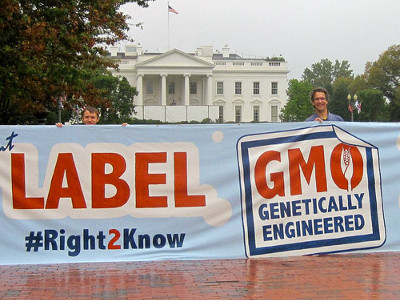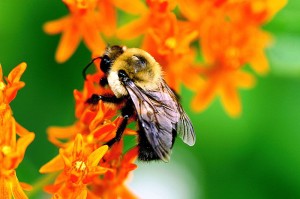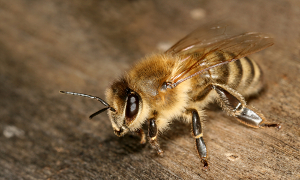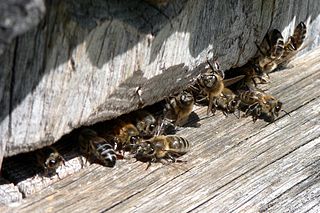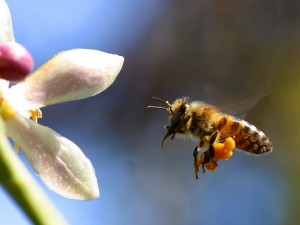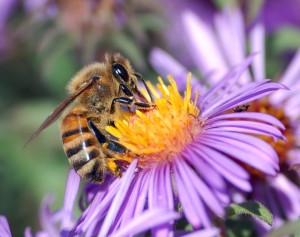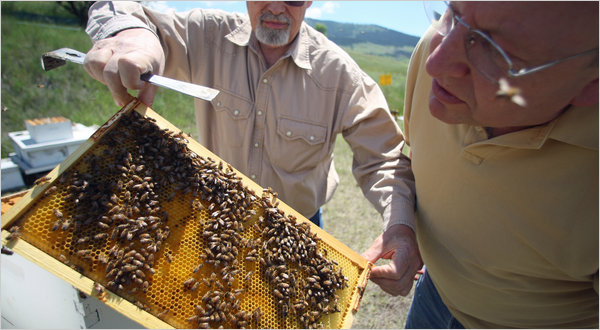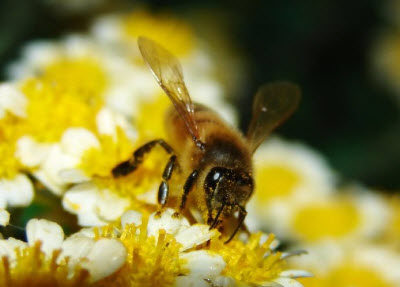The latest on the email scandal revealing close ties between industry and public university professors and the EPA’s failure to protect the bees.
|
|
|||
|
It is quite extraordinary that, given the scientific reality now commonly accepted in relation to molecular biology, the genetic engineering industry is still allowed to get away with using terms like precise. The genetic engineering industry is a house of cards built almost solely on the foundation of a scientific principal that is now anything but solid. The Economic Research Service, an arm of the U.S. Department of Agriculture, in its second report, Genetically Engineered Crops in the United States, downplayed the impact of glyphosate resistance and gave Bt crops the kid gloves treatment. There is no scientific consensus that GM crops are safe, especially when the views of the scientific community independent of the GM crop development industry are taken into account. Another study finds inert ingredients in glyphosate formulations to be toxic human cells, questioning regulators’ focus on the active ingredient during the risk assessment process. Analyzing over 20 years of data, two researchers concluded that pesticide use, not habitat loss, was the most important factor contributing to widespread declines in populations of U.S. grassland birds. A recent study found that a combination of two pesticides impairs the natural foraging behavior of bumblebees, increases worker mortality as well as increases the propensity of bumblebee colonies to fail. There was no shortage of vitriol against a new long-term GMO study showing cancers in rats fed GM maize, as well as those fed Roundup, in amounts well below the officially set safety limits. Is the orchestrated response to discredit Seralini et al anti-science? Reactions to EPA’s refusal to suspend the registration of clothianidin, given the mounting scientific evidence that this systemic poison poses an imminent hazard to bees, have been strong and unequivocal. The EPA went to great lengths to reject a citizen petition seeking to suspend the use of a systemic pesticide that scientific studies link to massive bee die-offs. What happened? With even more scientific studies linking systemic pesticides to bee deaths, beekeepers and environmental organizations petition EPA to suspend clothianidin, a pesticide that got a free pass from registration requirements. While evidence of the detrimental impact of systemic pesticides mounts, many beekeepers and independent scientists wonder why U.S. regulators have not suspended or banned their use. It’s hard to imagine American agriculture without bees and, yet, we may be seeing the end of beekeeping following years of mysterious collapses of honey bee colonies in the United States and the world. Scientists at the University of Bristol have discovered a previously unknown route by which GM genes may escape into the natural environment leading to questions about the unintended patented gene flow. At last there seems to be an answer to the honeybee disappearance mystery. A virus-fungus one-two punch is now the lead suspect behind honeybee devastation. However, additional studies are needed to determine to determine the exact mechanisms leading to honeybee deaths. Recent research from USDA points to a correlation between a fungus and a family of viruses that may be working together to cause the Colony Collapse Disorder in honeybees. Many still believe, however, that other causes such as pesticide use in agriculture and GMOs that produce pesticides, also play a role in the collapse. The British Beekeepers’ Association is moving away from cash sponsorship deals with pesticide manufacturers after concerns that the chemicals may be harmful to bees. The Association is looking for other sources of funding. According to TimesOnline, bee numbers in Britain are down 54 per cent in 20 years. A new study by Penn State University found widespread and remarkably high level pesticide and other toxicant contamination of bee hives. The study sheds light on how modern day agriculture contributes to Colony Collapse Disorder. A new breed of genetically engineered dandelions is currently in development and could be implemented in a number of industrial, chemical and pharmaceutical uses. Currently, transgenic dandelions are used to create dandelion-derived latex. |
|||
|
 |
|||
